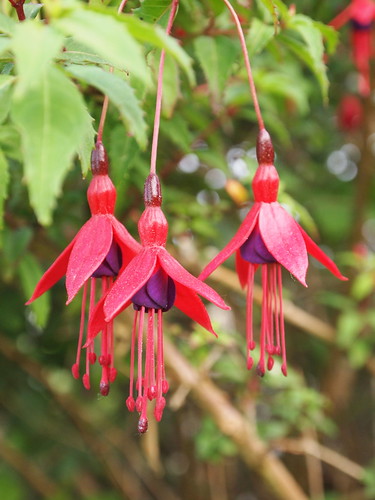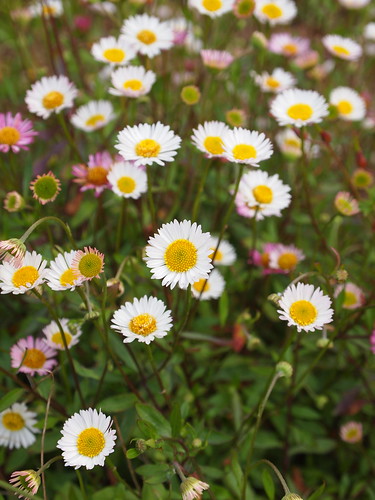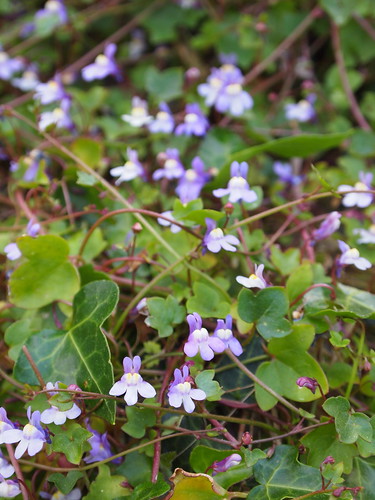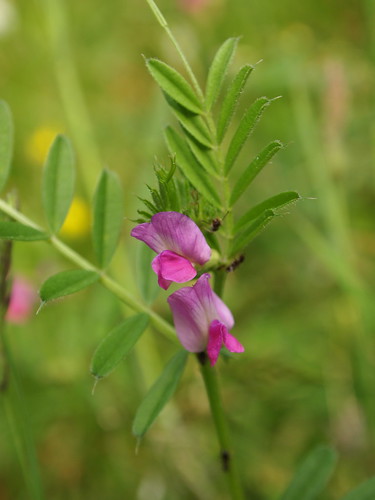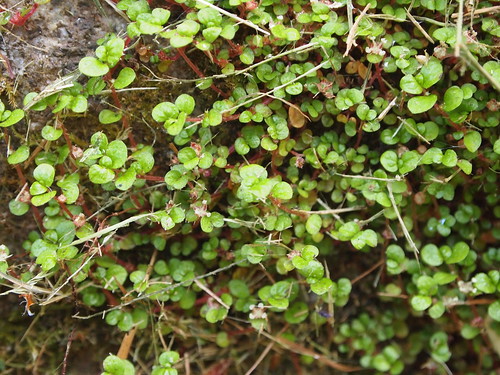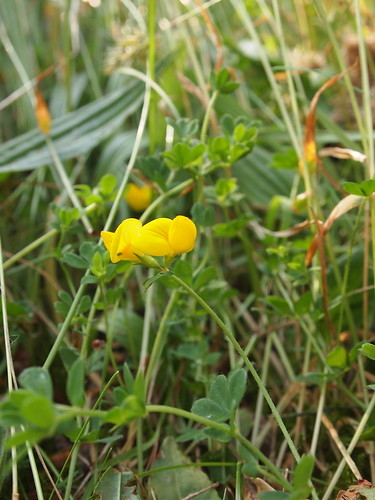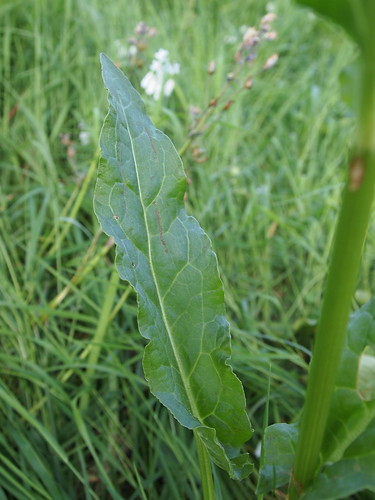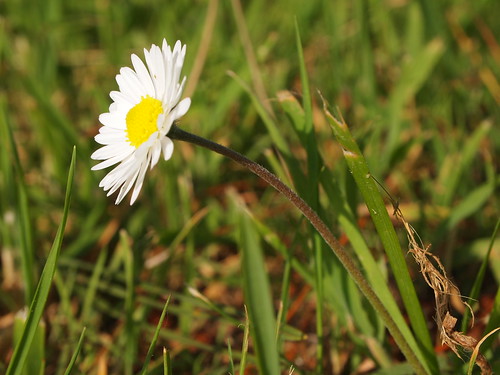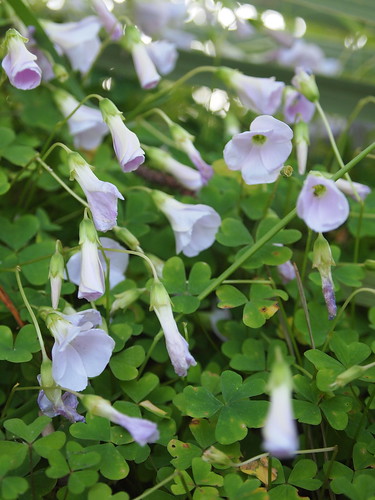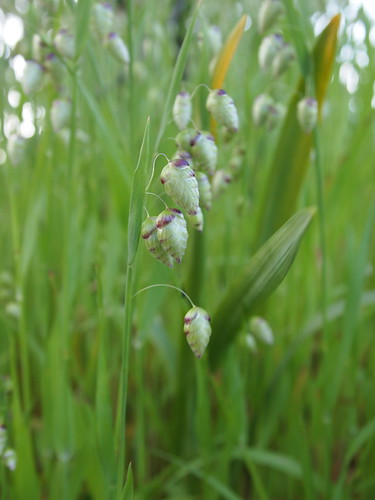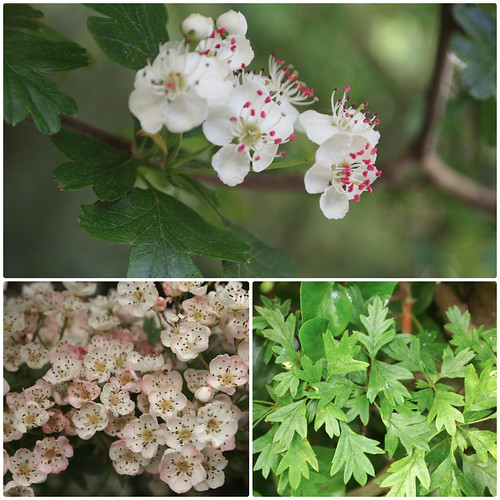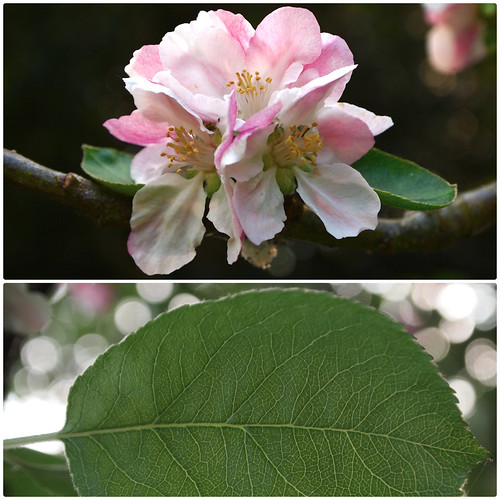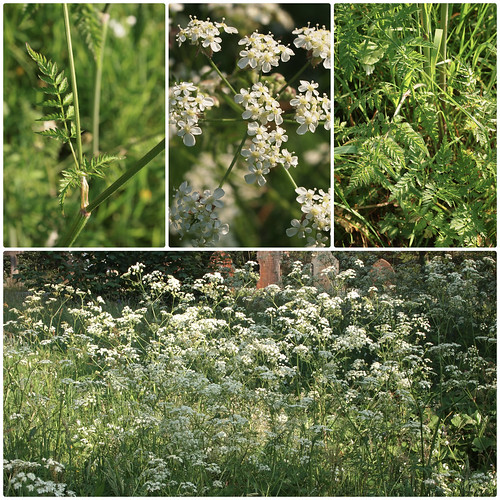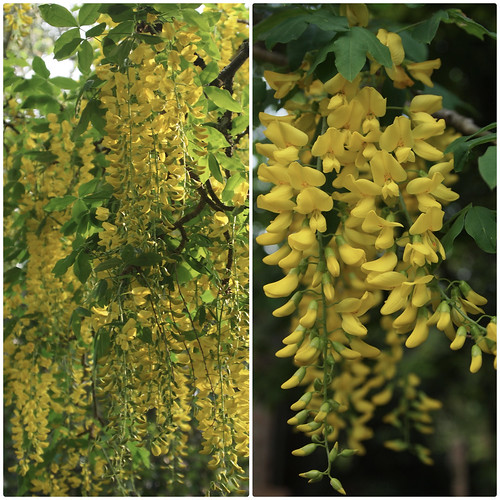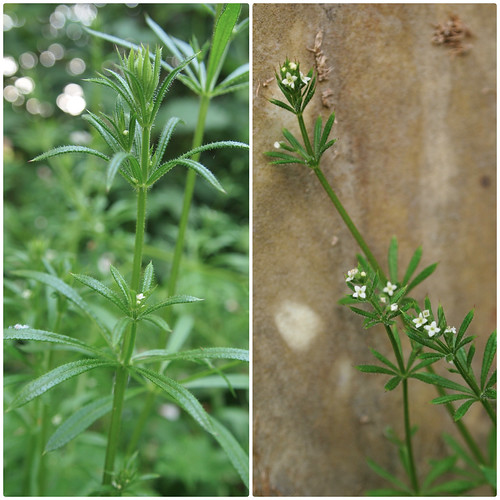People who aren't involved in University of Exeter field courses tend to think that those of us who are are basically getting a free vacation that happens to involve a large group of students. This assumption couldn't be much further from the truth, because field courses are exhausting; I usually come back feeling more tired than I was when I left, and have often picked up some sort of illness along the way, to boot. This is not to say that the trips aren't enjoyable, because they are, but they also force us to earn our keep.
One of the biggest stressors in the days leading up to this year's Isles of Scilly field course was the abysmal forecast, which predicted nonstop wind and rain and altogether unpleasant conditions for a group of people who would be camping and wandering around on an exposed island. When we departed from campus for the drive to Penzance, and then again when we left Penzance on board the Scillonian III for the 3-hour trip to St. Mary's, the sky was looking overcast and threatening, but was not yet delivering any torrents of rain.
(Clouds over Penzance, as seen from the deck of the Scillonian III)
As per usual, we all bundled up in the hopes of withstanding the cold sea breezes long enough to catch sight of a whale or a sunfish or some other exciting marine creature. The wind was pretty cutting, though, and when the rain picked up as we bid farewell to Land's End, things got pretty uncomfortable. This is about the point when my morning cup of tea forced me to go down to the bowels of the boat for a quick potty break that doomed the rest of my trip, and most of the rest of my day.
If you've ever been on a boat in inclement weather, then you'll know that the best place to be to avoid seasickness is somewhere near the center of the boat, where there is the least amount of pitch and roll; hopefully this will also offer a view of the horizon. It also helps to be facing in the same direction in which the boat is traveling, because this helps your brain process all the different motion stimuli it's receiving simultaneously. Well, unfortunately for me, the ladies' restrooms violate all of these rules, and pretty much from the moment I walked in, I knew that I had to get out as soon as possible in order to avoid seasickness. Knowing and doing are two different things, however, and although I'd say I spent less than a minute in the bathroom, this was more than enough time for the damage to be done. Sasha has informed me that my face had gone colorless by the time I returned to the deck, and I'm sure that was true; all of the blood had probably drained to my stomach, which was by that time roiling with nausea.
By this point the ship had departed the relative shelter of the coastline and was making its way across the open seas, so we were exposed to increasingly intense waves and squalls; on even the best of days, I would have reacted badly to a mere fraction of the motion that we experienced. All I could do was find an available portion of railing and stand there staring straight ahead while taking deep breaths. Despite the cold and rain, I began sweating profusely and had to unzip my rain coat and fleece; that's when I knew I was destined to vomit over the side of the ship, in front of all our students. I also began shaking, first in my legs, then in my arms, and then in my head and jaw; my limbs started doing things that I couldn't control. It was very hard to stand up, but any time I sank down to a crouch or--heaven forbid--tried to sit all the way down on the deck, I couldn't see the horizon as well and immediately became even more nauseous. The most amazing thing was that I suddenly found myself more exhausted than I had ever felt before. I was actually falling asleep standing up, but the moment my eyelids drooped and I lost sight of the horizon, I immediately became sicker and jerked back awake. I was literally hanging from the railing of the ship, using every last ounce of strength and self-control to keep myself awake and on my feet. As horrendous as I felt, the scientist in me found the whole experience fascinating.
The latter 2 hours of the journey passed in an excruciatingly slow fashion. I have been motion sick very often in my life, but never so miserably. The only--and I do mean only--positive aspect of all this was that I happened to be standing on the port side of the boat (for all you landlubbers, that's the left-hand side as seen by a person facing forward while on the boat). The prevailing winds were blowing across the ship from the starboard side, which meant that every time I threw up over the railing, the wind carried it away from the boat rather than blowing it back on deck and into my face. I imagine things were a lot messier on the other side of the ship, and I know that they were pretty awful in the middle; more than one person failed to get to a railing in time and ended up vomiting right on the floor. Needless to say, this was not a great way to begin the trip, though it made me happier than I've ever been to finally reach St. Mary's.

(Another reason to be happy about our arrival: We caught a glimpse of blue sky and even a bit of sunshine. See the two yellow rods on the lower back half of the Scillonian? I was standing right behind far one during the trip from Hell...)
One of the funny things about field courses is how we basically do the same things every year, and yet still manage to have new and interesting experiences. Our itinerary, for instance, always involves a hike around the island, a few hours spent fossicking along a rocky shoreline, a walk on St. Agnes and Gugh, and a boat trip to see the auks on and around the Western Rocks. [Side note: Even the students seem similar from year to year. There is always at least one person who insists on wearing "civilian" clothes no matter how inclement or extreme the weather; there is always an ultra-hippie or someone with dreads; there is always a grump who complains about everything; and there is always at least one guy who has to do something ridiculous, such as dangerous rock-climbing or unwarranted push-ups, to prove his manliness. Other recurring events are a bout of intense weather, an unexpected illness, a surprise, and a last-minute change of plans. If a trip does not have all of these components, I'm not sure that it can be considered a success.]
Despite all these recurring themes, you always find a way to see something unusual, or at least to see the same old thing in a different light. This is partly thanks to the students, each of which has his/her own unique perspective; no matter how many answers you've stockpiled for their inevitable questions, there is always one inquiry that catches you off-guard. Mother Nature is also responsible for a good deal of the variety. We visit the Scillies to see wildlife, and of course you just never know what might show up where; this is especially true on Scilly, which is famous for hosting bird species blown in by bad weather, and for being susceptible to colonization by all manner of traveling species. During our first trip to the Isles I saw a single goldfinch, but this year I came across several large flocks; last year I photographed big patches of blooming thrift, but this year we've had a dry winter and a cold spring and all I could find were a few buds. The following are a few of this year's notable finds.
Something old, and yet something new:
Every year we take the students to a big stone wall near our campsite and point out the breeding behaviors of resident house sparrows. This year, for the first time, I got a picture of one of the males sitting in the entrance to his nest cavity, guarding his territory--and possibly his mate and/or their eggs.
This is a view you might remember from last year: the colorful St. Mary's harbor. Last year's photo was taken from quite a bit farther away. This angle/distance kind of makes the boats look like the toy models of a very spoiled child.
One major difference of this year's trip is that I came equipped with my new 70-300 mm lens, which finally enabled me to take the kind of wildlife photos I've always wanted to take. Here's an up-close-and-personal shot of one of the incredibly tame song thrushes running around our campsite.
The rock formations of the Isles of Scilly are
incredible, and every year I try--and fail--to capture their drama with
my camera. No matter what angle or distance I shoot from, I can't seem
to find a way to bring these to life in 2D:
Our campsite is located on the grounds of the old
garrison, where you can still find fortifications and retired cannons.
The military architecture dates back as far as 1593, when what is now
known as the Star Castle Hotel was built by Robert Adams during the
aftermath of the attempted invasion by the Spanish Armada. Exterior
fortifications such as those shown here were transformed into gun
batteries much later, in 1740. There are also several WWII bunkers
located along the coastline.
Something I hadn't noticed during any of our previous
trips: An old, but still functional, water pump in one of the municipal
parks on St. Mary's:
I've learned a lot about wildflowers since my first trip
to the Isles of Scilly, where lovely vegetation is abundant. However, I
cannot, for the life of me, figure out what this species is:
Maybe
someone more botanically inclined can enlighten me?
I happened upon a hunting kestrel while walking along the coastal path one afternoon. I brought my camera up just in time to snap this shot before the bird took off for more fruitful hunting grounds.
One of the many interesting species clinging to the
boulders along the St. Mary's shoreline:
This one--a moss?--reminds me
of a brain.
We Americans aren't supposed to like house sparrows,
since they are an invasive species in the U.S. However, they're native
in the UK and so I don't have to feel guilty about enjoying their antics and finding them to be quite handsome little birds.
A pair of herring gulls on Gugh:
The golden lichens growing on these boulders indicates that the rocks are in the "splash zone," or the area of the coast that can be hit by sea spray. Splash zones can extend quite far from the water because wind and wave action are often very intense during storms, causing the water to reach much farther inland than you might expect.
Just to emphasize that last point, some of the wave
action I observed while taking a walk around the island the evening
before we departed:
(The intense waves were causing some serious spray and making me very worried about the boat ride home.)
During a solo meander around St. Mary's, I visited the cemetery in Old Town for the first time ever. It was a treasure trove of neat old headstones and bird life.
I quickly snapped this photo in order to make a bird ID, and was surprised when it actually turned out quite clear. I think this is a chiffchaff, though it is not usual to see them foraging on the ground as they do on the Isles of Scilly. This would not be the first time Scilly birds were observed doing something odd--because the islands have so few trees and natural predators, and host an abundance of nonnative species, the animals have developed all sorts of strange and unusual behaviors.
Also in the graveyard was a European robin, using a number of headstones as perches from which he could locate prey.
As I mentioned above, one requirement of every field course is a surprise, and we had a couple this year. Perhaps the biggest surprise was that the weather basically behaved itself, giving us plenty of opportunity to traipse about the island in relative peace and comfort. This was more true of the daylight hours than those that came after sunset; we had some pretty intense nights during which our walls shook and rippled violently. At one point, the gusts exceeded 50 mph, causing flooding and the collapse of a couple tents and nearly blowing away another; luckily, a group of people returning from the pub arrived just in time to tie/pin down our kitchen tent after stealing spare rope from (and effectively sacrificing) our kit tent. Several students, including Sasha's PhD student who came along as an instructor, were forced to spend the night in various parts of the shower block in order to stay as warm and dry as possible.
A more pleasant surprise was an unprecedented wildlife encounter we had while touring the Western Rocks in search of auks. As usual, we saw a few lone seals and a couple of pairs, before rounding a corner and coming across two beaches chock full of sunning individuals of all ages and colors:
Our arrival caused quite a stir, as you can see here. Our wildlife guide extraordinaire, Will Wagstaff, was impressed by the size of the show and reported that he'd never seen anything like it--and, given Will's extensive experience around the Isles, that is really saying something.
Because of the turbulent evening weather, we were forced to cancel our traditional last-night barbecue and instead take the students to the Bishop and Wolf for burgers. Sasha often complains about British burgers because UK chefs have a tendency to mix in a bunch of bread crumbs, but these particular burgers were all-meat and all-delicious--much better than the half-cooked store-bought ones we usually end up with after struggling to prepare them on disposable grills in our wet and windy campsite. I also enjoyed the eclectic decor of the restaurant, which gave me plenty of things to photograph while we waited for our meals to be delivered.
(The moon and Venus, overseeing my walk back up to the campsite after dinner and a visit to The Mermaid.)
Luckily, the day of our departure was fairly calm and clear. Also lucky was the fact that I had packed Dramamine; although I hadn't taken it in time for it to work its magic during the ferry ride out to the Scillies, you can bet I made sure to drug myself up before the trip back. As a result, I was much happier and more comfortable during our journey to the mainland. This gave me the chance to do some wildlife-watching; for instance, we twice saw pods of common dolphins frolicking in the wake of the Scillonian. Despite the lovely views that the trip afforded, it was nice to see the increasing proximity of Penzance and its large supply of late-evening sailors out on the water:

From there onwards our trip was smooth sailing (not literally of course), except that Sasha's and my taxi reservation was forgotten and we were left waiting on campus for an extra 30 minutes--not what you want at 9 PM when you are desperate for a hot bath and your own bed. Despite this rocky ending (and much rockier beginning) to the journey, I'd say that the trip was a success. The Isles never get boring, and their stunning beauty is always impressive--an opinion that I know is seconded by at least one other tourist in this year's group:
